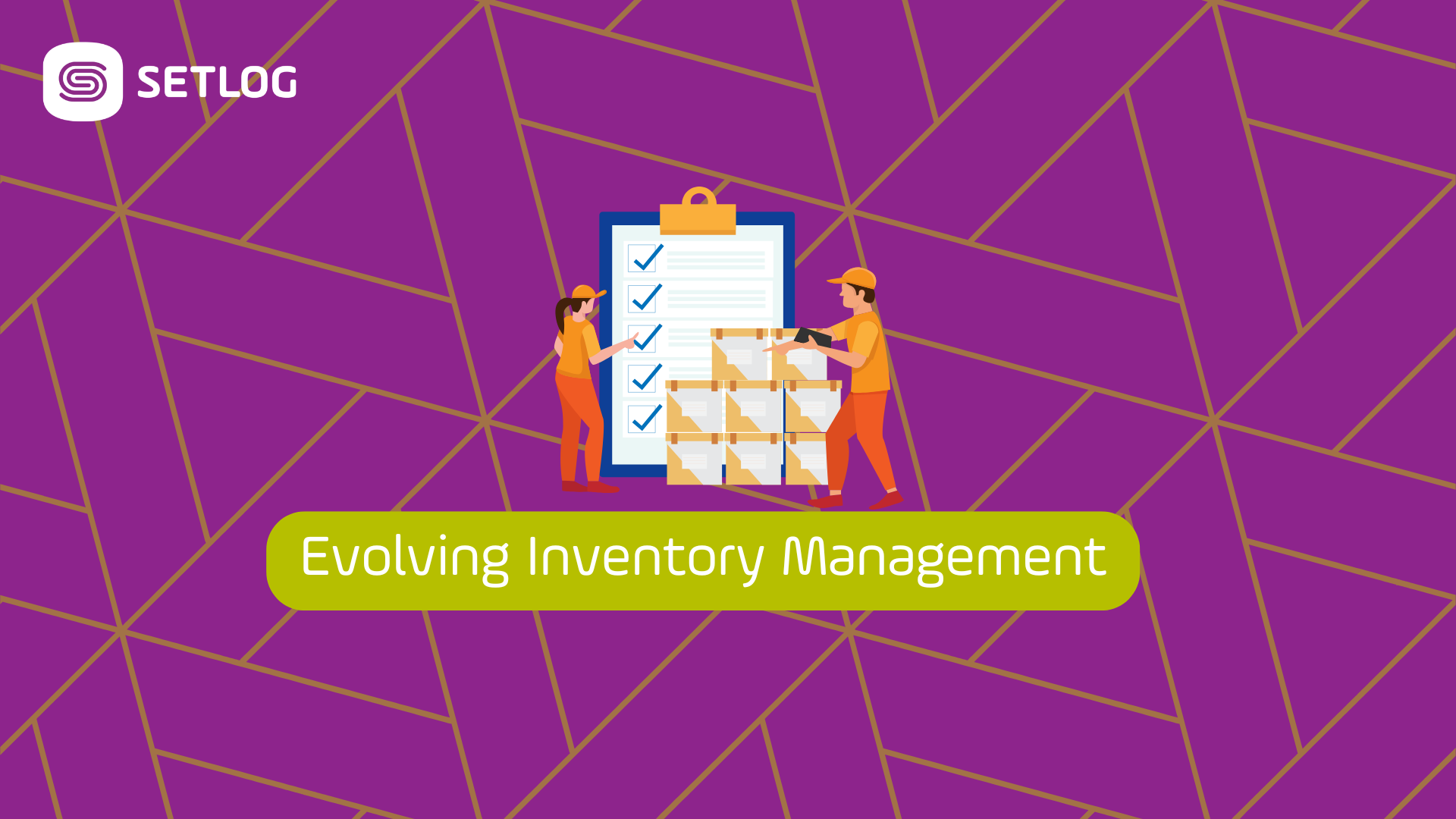
Overstocking drains your capital, understocking your customer loyalty. In the current supply chain climate, the stakes for inventory management have never been higher — yet many companies are still relying on outdated methods. Inventory is no longer just an operational task. It’s a strategic function — one that must enable agility, resilience, and financial performance. To get there, companies need to evolve. This blog post explores how inventory management is changing — and why failing to adapt now means falling behind.
From Control to Chaos: Why Traditional Inventory Models no longer work
Forecasting errors, reactive planning, and static safety stock rules still define how many companies manage inventory — even in todays environment. These outdated methods may offer a sense of control, but they fall apart under real-world volatility. Demand changes overnight. Lead times stretch unexpectedly. Customer expectations are higher than ever. Yet instead of adapting dynamically, close to 30% of organizations still remain locked into fixed planning cycles, inflexible replenishment parameters, and historical assumptions that no longer apply, according to Gartner.
A major part of the problem is an overdependence on spreadsheets or ERP systems that are long due for an update. These tools aren’t built for today’s pace. They lack real-time visibility, cross-functional integration, and the intelligence needed to sense change and respond in time. The result? Inventory imbalances that erode margins and trust. Excess stock ties up capital and Warehouses overflow with the wrong items while critical products run dry. What looks manageable in Excel becomes a real liability on the ground.
Evolving inventory management requires companies to break with legacy thinking. It demands visibility, adaptability, and integrated decision-making. Without it, inventory becomes more than a cost center — it becomes a systemic risk. To break out of this cycle of inefficiency, companies need to stop treating inventory as a tactical necessity and start seeing it as a strategic advantage.
The Strategic Shift: From Cost Center to Resilience Engine
For years, inventory was treated as a cost to be minimized — a buffer against uncertainty, not a lever for performance. But in today’s climate of supply chain volatility, clinging to that view is no longer just narrow — it’s a liablilty.
Leading companies are shifting their mindset. Inventory is no longer just a financial line item, it is now viewed as a tool for agility, a strategic asset — one that can absorb disruption, maintain service levels, and support faster decision-making when paired with the right processes and data. It’s no longer just about minimizing stock levels, but about placing the right stock, in the right location, at the right time.
This shift begins with alignment. Inventory strategy can no longer be siloed within operations or warehouse teams. It must operate in sync with procurement, logistics, and sales to ensure that planning reflects both supply risk and demand volatility. Static models are losing ground to scenario-based planning, dynamic safety stocks, and collaborative inputs from across the organization.
Segmentation plays a key role. Not all products, suppliers, or markets require the same approach. High-margin SKUs, high-risk suppliers, and fast-moving goods demand precisley tailored buffers and service targets. By applying intelligent segmentation, companies can prioritize where to build resilience — and where to run lean. Companies that succeed in this transition aren’t just tweaking inventory parameters — they’re redesigning their approach to resilience. And in a market where disruption is now routine, that difference isn’t just operational. It’s competitive.
Technology as the Catalyst: Real-Time, Intelligent, Integrated
Without the right technology, even the best ideas fail in execution. Decisions today must be based on live data, not yesterday’s spreadsheets. What was once a bonus feature, is now essential. Real-time visibility across suppliers, warehouses, and transport networks allows teams to respond to changes as they happen — not after the damage is done. Whether it’s a delayed shipment, a spike in demand, or a sudden stockout risk, intelligent systems surface the signal before it becomes a disruption.
But visibility alone isn’t enough. The real power lies in integration. Too often, inventory data lives in isolated systems — ERPs, WMS platforms, spreadsheets — creating blind spots and misaligned decisions. What used to be manual guesswork is now guided by connected and intelligent systems that anticipate, adapt, and execute in real time.
AI and machine learning help companies forecast demand more accurately and adjust stock levels dynamically. IoT sensors track inventory location, condition, and movement down to the item level. Individually powerful, these technologies become game-changing when unified — driving the rise of hyperautomation across supply chains.
The Risks of Standing Still: What Inaction Will Cost You
The first signs of inaction show up in the numbers: too much stock in the wrong place, not enough in the right one. Capital is locked up in slow-moving inventory, while high-demand items run out, resulting in lost sales and broken service promises. Warehouse space overflows with unsellable goods, while customer satisfaction plummets due to poor availability.
Obsolescence becomes a hidden drain. Products expire, go out of season, or lose value before they can be moved. The result? Markdowns, write-offs, and margin erosion — especially in fast-paced industries like fashion, electronics, and consumer goods.
Beyond the financial losses, inaction erodes competitiveness. Digitally advanced companies are accelerating — using predictive tools and real-time insights to fine-tune inventory and respond instantly to disruption. Businesses still relying on static models and manual tools can’t keep up. Delayed reactions, missed signals, and poor visibility all translate into missed opportunities and shrinking market share.
In a supply chain landscape defined by disruption, companies without flexible, tech-enabled inventory systems are constantly playing catch-up. They can’t scale quickly, shift inventory fast enough, or collaborate across functions in real time, resulting in a dangerous fragility. The longer this status quo is accepted, the harder it becomes to break free from it. And by then, the damage is already done — in lost revenue, wasted resources, and lost ground to more agile competitors.
What Inventory Leaders Must Do Now
- First, enable real-time visibility across systems, sites, and suppliers — without it, you’re operating blind.
- Second, invest in smart, AI-powered tools that support dynamic forecasting and automated replenishment, not just static planning.
- Third, ensure these tools are integrated across departments — from procurement to logistics — to break down silos and enable fast, aligned decisions.
- And finally, rethink performance metrics: move beyond turnover ratios to track responsiveness, adaptability, and resilience in real time.
Conclusion: Inventory Management Isn’t Static – Neither Should You Be
Inventory management is no longer about counting boxes. It’s about building a responsive, intelligent system that empowers your entire supply chain to perform under pressure. As we’ve explored, traditional methods — static planning, siloed tools, manual decision-making — are no match for the complexity and speed of today’s global environment.
The risks of standing still are too high. Excess stock, lost sales, operational inefficiencies, and eroded customer trust are just the beginning. Meanwhile, digitally mature competitors are using real-time visibility, generative AI, and automation to pull ahead — not just surviving disruptions, but gaining advantage through them.
Modern inventory management demands more. It requires connected systems, cross-functional collaboration, and a culture that prioritizes data over instinct. Leaders who act now — who rethink their tools, their processes, and their KPIs — will not only protect performance but unlock new opportunities for growth and resilience.
The window for transformation is open — but it won’t stay open forever. The future won’t wait and, neither can your inventory strategy.
